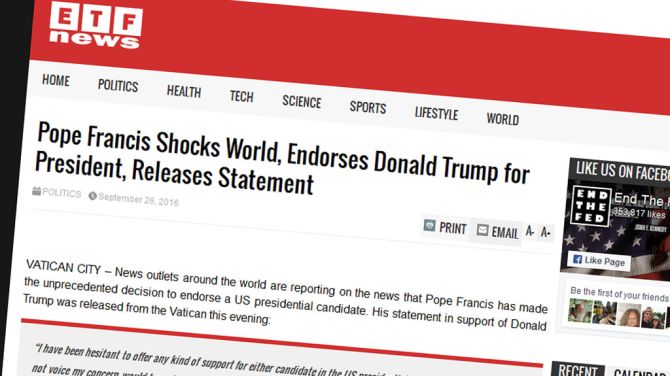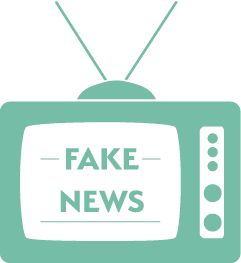Published
on
December 13, 2016
| 2,497 views
| 0 followers
members are following updates on this item.
Lately it has been all over the press: there is a lot of fake news out there and that's not good at all. Facebook has been accused of spreading false reports; there are clues that bogus news has been used to influence the American presidential elections and all kinds of satirical pieces are being mistaken for the truth. Every day, more an more examples rise to the surface.

(To be clear: this is not true!)
It has become increasingly difficult to evaluate news and information. Videos are being shared by millions online and seem quite credible; but turn out to be just another hoax. How can children and young people -but also adults, because we are just as guilty- recognise and debunk such false coverage? That asks for quite a few media literacy skills.

One of the best ways to make children and youngsters aware of the need for a critical stance towards reports, is to let them experience how easy it is to falsify the news. In our project "The Fake News Week" children actively get to work as a reporter with 'bad intentions' and try to convince their peers.
When you take a look at a news report, you have to be critical. Whether it's on TV, in the newspaper, or online; there is always a chance a false message crept into it or even more subtle: some details are wrong or an image has been altered to influence the message.
Always pose a few questions before you believe something:
You can learn more about evaluating (fake) news and working on critical media literacy skills in our dossier and practice bundle 'The Teachers Guide to Radicalisation'.
Watch out! Just because there are numbers or photographs (or even videos) in an article, doesn't make it true. Images can be edited -and more easily than you think- and statistics can prove just about 90% of all statements.
When you suspect a report to be untrue; you can of course go online and consult a fact checker. Take a look at snopes.com, an NGO with a mission to debunk fake news reports and spread correct facts back into the world.
Most class groups are familiar with it already: covering the daily news. But what if you take a different approach from bringing newspaper snippets to school? What if you let the pupils get to work themselves as reporters, making the news for the rest of the school for the week. This gives them the chance to experience what it is like to become a reporter, for example in the sCoolPaper.

In the Fake News Week things get a bit more exciting: not all news reports have to be true. Challenge your students to post articles that are fake, but seem very real and true. Encourage them to use multimedia to support their articles, such as photo and video editing, to strengthen their messages. A sunny, fun video will become quite sullen, just by adapting the colours.


Of course you can't only send out fake reports to the school, as pupils will catch on quite fast. Alternate with other reports, such as normal news and true reports that are so absurd they seem fake. Leave it up to the children to guess what is true and what isn't... Spice it up with a leaderboard per student or class group.
Children, youngsters and adults: we all step into the trap of believing fake news and have shared a fake report on social media. That is why it's of utmost importance that everyone takes a critical stance. The most valuable skill is asking questions. Never assume a report is true, just because a lot of people say so. Question where it comes from and what is being said. Is it true? Why is this person saying this? What is behind it all? Dare to compare different media and find alternate sources.

Page Options